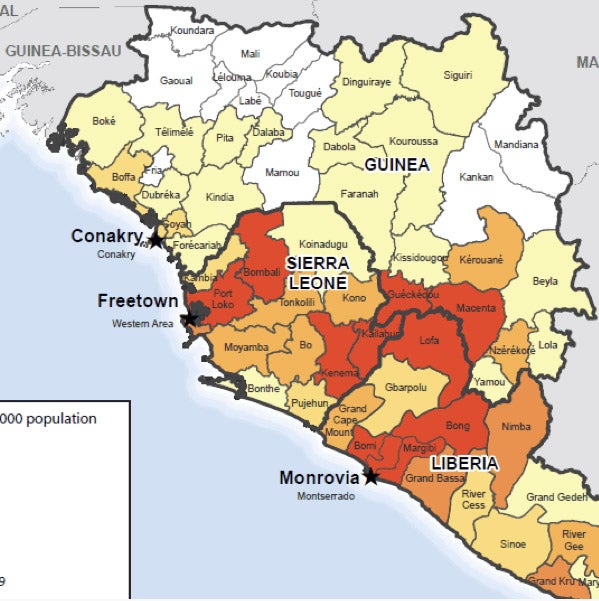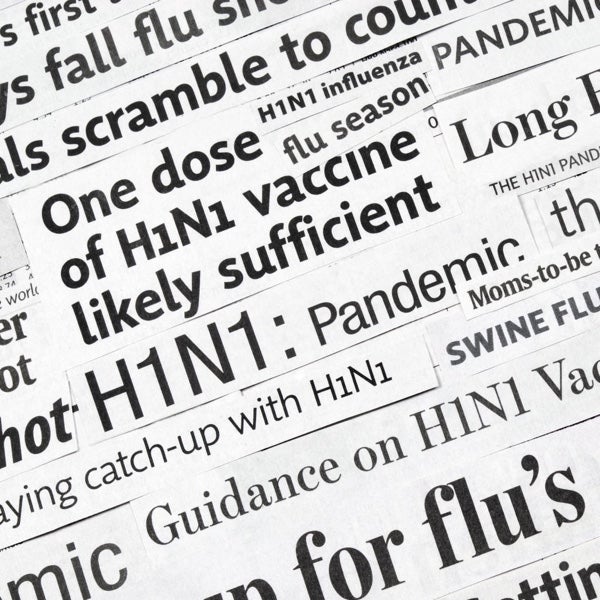
Infectious Diseases Model
Estimating the severity of a pandemic requires an understanding of the key variables affecting their impact, together with their probability of occurrence.
Managing Pandemic Risk
The Moody's RMS Infectious Diseases Model uses fundamental principles of epidemiology to capture pathogen characteristics and assess how intervention strategies could reduce potential impacts.

Moody's RMS Infectious Disease Model
Moody’s RMS pioneered the probabilistic quantification of the impacts of infectious disease with the release of an Infectious Diseases Model in 2006. This model covers influenza, other respiratory pathogens, emerging infectious disease pandemics, and coronaviruses, including the pathogenic virus causing COVID‑19.
Part of the Moody’s RMS LifeRisks®️ platform, the model reflects the latest insights and medical research that underlies the drivers of pandemic mortality and allows for the use of alternative model parameters to support portfolio management, risk transfer and capital adequacy.
Probabilistic Infectious Disease Modeling
Epidemiological modeling and the historical records of recorded pandemics of the past three centuries are used to inform the Moody's RMS Infectious Disease Model.
Extensive Event Set
A stochastic event set, including tens of thousands of pandemics, represents the full spectrum of pathogen characteristics and major intervention strategies by geographical area affecting their impact.
Detailed Country Profiles
The model covers 59 countries with parameters such as age distributions, prevalence of pre‑existing conditions, health‑care capacity, immunization and drug availability.
Measuring Pandemic Spread
Two core measures are used: transmissibility – or the speed at which a pandemic spreads through a population, together with virulence based on case‑fatality rate.
Accounting for Mitigation
Factors that reduce pandemic mortality such as the use of pharmaceuticals and vaccines, together with non‑pharmaceutical interventions are considered dynamically within the model.
Pioneering Pandemic Models
Over 15 years, Moody's RMS has an enviable record of innovation as a pioneer of probabilistic infectious diseases modeling. Models help to assess the health and economic impacts of pandemics for insurers, investors, and governments.

2019
New Insight on Influenza
Findings from virologists on how childhood exposure to a previous influenza pandemic is imprinted on the immune system, is one of many discoveries incorporated into the updated Moody's RMS Infectious Diseases Model.

2015
Ebola Crisis
After the 2014 Ebola crisis that impacted countries in West Africa, Moody's RMS presented alongside the World Bank on solutions for pandemic risk mitigation and financing.

2015
MERS Analysis
In 2015, Moody's RMS developed a counterfactual scenario based on Middle Eastern Respiratory Syndrome (MERS+) which corresponded to a more transmissible mutation during the refugee exodus from Syria. This gave a warning that MERS itself was a near-miss.

2015
National Pandemic Risk
Moody's RMS experts contributed to positioning pandemic risk on the U.K. national risk matrix, as the highest risk in terms of likelihood and impact.

2011
Analyzing Global Pandemic Risk
Following the 2009 pandemic, Moody's RMS undertook an innovative study of pandemic risk to the sovereign wealth fund of Singapore, in collaboration with Australian academic experts in global economic modeling.

2011
ILS Excess Mortality Bonds
Moody's RMS undertook pandemic risk analysis for Swiss Re's excess mortality bonds at the time of the 2009 H1N1 swine flu pandemic.

2011
H1N1 Pandemic
Between April 2009 and April 2010, the H1N1 ‘swine flu’ virus infected as many as 1.4 billion people across the globe and killed between 151,700 and 575,400 people, according to the Centers for Disease Protection and Control.

2006
Risk Model Applications
Moody's RMS explored the range of use of pandemic risk modeling to cover downturns in tourism, aviation, and life insurance portfolio optimization.

2006
First Infectious Disease Model
Moody's RMS pioneered pandemic disease modeling, launched in 2006, during the emerging H5N1 Avian Flu crisis. Our principal academic adviser was Prof. Neil Ferguson, one of the world’s leading epidemiologists - then and now.


